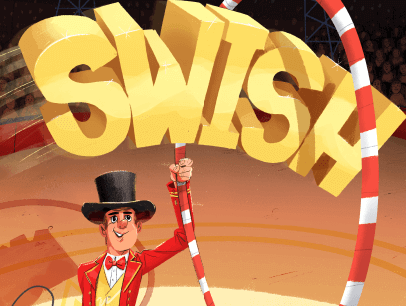
I was a new professional speaker, and it was my highest booking fee to date: an opening keynote on humor for a global corporation’s retreat in Northern California’s wine country. However, as the date grew near, I was anything but confident I could wow this audience. I reached out to the late humor consultant John Cantu for coaching and a shot of confidence.
John joked that I was facing a “trifecta of danger” by giving a humorous keynote, in the morning, to accountants! My face grew ashen as I envisioned an unresponsive audience staring back at me for 45 minutes.
Sure enough, I pressed from the start, trying too hard to be funny. My humor fell flat. My alliteration flopped. My turns of phrase fizzled and by 8:07 a.m., I was sweating onstage in a cool wine cellar.
I took a deep breath. I told the audience I’d done some research and knew, behind those emotionless faces, they were secretly laughing inside. Silence. Then, from the corner of my eye, I detected the slightest of smirks from a man in the front row. I turned to him and smiled: “I saw that!” Then I heard a woman suppress a giggle: “I heard that!”
I went for it. “Let the auction begin. I’ve got one smirk. One giggle. Can I get a chuckle? A chortle? Who’s got a guffaw? On the count of three, everyone let out a laugh!” And with that, we all shared a sip of silliness!
Realize that what’s funny in Peoria isn’t necessarily so in Pretoria!
I replaced scripted humor with real-time reading of the room and ad-libbing. For the next 40 minutes we laughed and enjoyed feel-good stories about the vicissitudes of accounting. That’s when I learned the best humor is homegrown, organic, and collaborative.
Audiences: To Know Them Is to Love Them
What are you saying and doing to win points with your audiences in introductions, opening remarks, and throughout your presentation? Are you appealing to the multiple segments of your audience, finding common ground, praising and honoring them, and acknowledging their hospitality? Or perhaps you’re unintentionally dividing your audience by making incorrect assumptions about their values, gender, age, politics, religion, or other beliefs.
Even if the audience looks or sounds like you, they may not think like you or share your beliefs. Never make assumptions. The more you know about who you are speaking to, the better you can appeal to their needs and wants, their values, their loves, and avoid remarks that ruffle feathers, or betray a lack of understanding of who they are or where you are. And realize, what’s funny in Peoria isn’t necessarily so in Pretoria!
Remember that it’s a sign of respect and professionalism to educate yourself in advance on the organization or the group you’ll be speaking to.
There are many ways to learn some basic details and dig deeper if you choose. Study the group’s website or relevant sites, such as those that cover your audience’s industry or profession. Attend one of the group’s meetings in advance if possible. Talk to a meeting planner or organizer to find out what resonated—or didn’t—with previous audiences.
When you’ve done the homework and customized your speech, your audience will marvel at your insights and praise you by saying “it’s as if you actually worked for us!”
Help everyone be seen, heard, and invited in.
If you’re unable to learn much about the audience in advance, show them in real time that you care why they came to hear you. Try informal queries from the platform or use online tools like polls and chat responses for virtual presentations. Ask a few questions to find out who’s “in the house” and help everyone be seen, heard, and invited in.
How Signature Styles Work
Strong, confident speakers rely on a variety of tactics and styles to win over audiences. For example, Harvey Mackay is a New York Times best-selling author, speaker, and former Toastmaster. He is often known to memorize the entire opening paragraph of his speech in the language and dialect of his audience, creating an instant bond.
Mikki Williams, a National Speakers Association Hall of Fame inductee, makes a striking appearance, live and virtually, with her big blond hair, big jewelry, and big personality. Audiences immediately are distracted by her resemblance to famous celebrities. Knowing this, she poses and eggs the audience on with “Okay, who do I look like?”
Obviously, Williams favors an audacious approach to winning her audiences. If there’s an elephant in the room, ride it! Do you have a distinctive accent? A unique look? A special skill or talent? Acknowledge it, leverage it, celebrate it! Williams exhorts you, “Be outrageous. It’s the only place that isn’t crowded.”
When you know your audience, you can even capitalize on differences. Earn goodwill, and have some fun, by playing on the assumptions that speakers and listeners might have about one another, as I did with the audience of accountants. Set a warm, playful tone and they’ll warm to you.
Toastmasters Accredited Speaker Eldonna Lewis Fernandez has used a humorous opener to set the tone for her various speaking topics and offers multiple qualities for her audience to identify with: “My name is Eldonna, and I am a Harley-ridin’ biker chick, military veteran, master negotiator, speaker-author-trainer-coach, girly girl, and most importantly, a mom.” An introduction like that is likely to surprise, puzzle, and quickly appeal to a range of listeners.
This is only a short overview of suggestions and examples. The bottom line is: Give your audience a reason to root for you. Do your homework. Respect them. And bank a speaking win.
Craig Harrison, DTM a Past District Director, is now a professional speaker based in the San Francisco Bay Area. He cites joining Toastmasters in 1992 as one of the best decisions in his career and life. Email him at craig@expressionsofexcellence.com
Related Articles

Presentation Skills
Great Story, Wrong Hero

Cross-Cultural Communication
How to Be Funny Across Cultures

Online Meetings



 Previous
Previous
 Make Every Listener Comfortable
Make Every Listener Comfortable
 Previous Article
Previous Article
